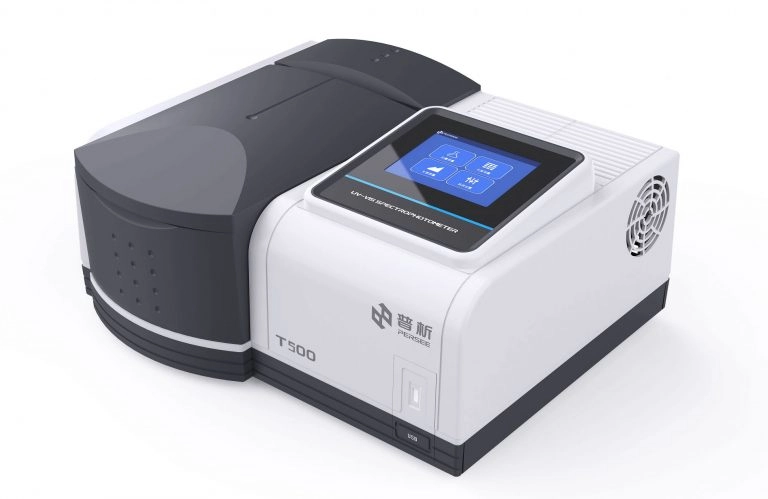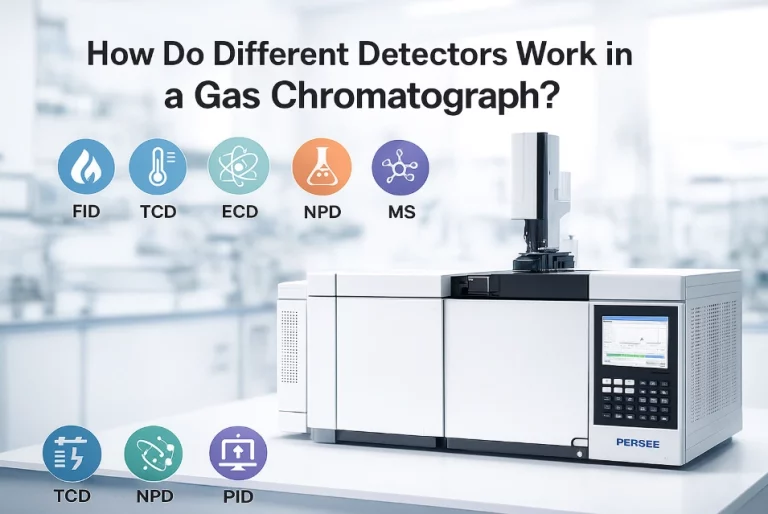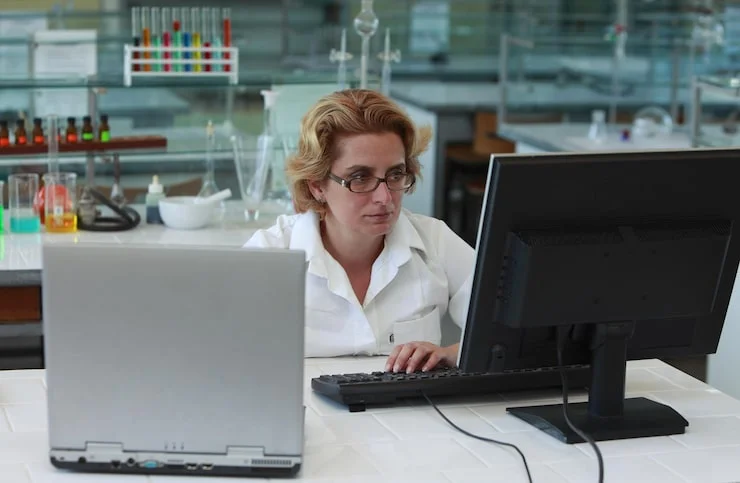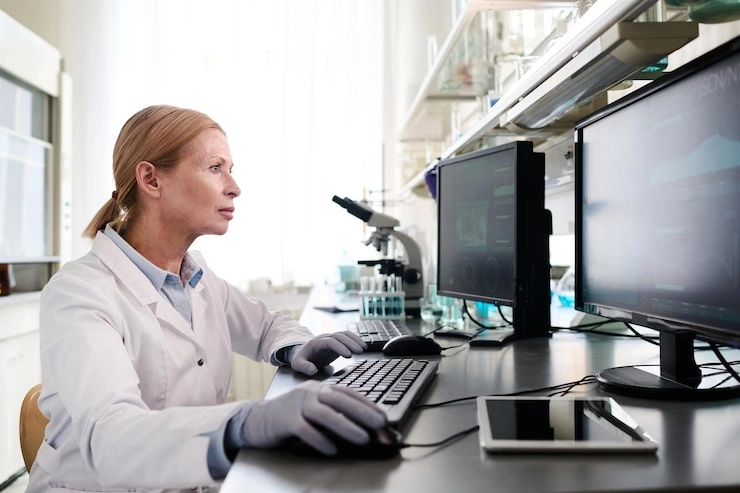
In the field of molecular analysis, few problems are as common as telling isomers apart. These are compounds that have the same molecular formula but a different arrangement of atoms. Because their chemical formula is identical, they also have the exact same molecular mass. This brings up a huge question. If high-resolution mass spectrometry (HRMS) works by measuring mass with amazing precision, how can it possibly separate these compounds that have the same mass?
The solution is a multi-step plan that does more than just measure mass. Scientists can figure out the small structural differences that define isomers by combining the strength of HRMS with advanced separation and fragmentation methods. This is a vital skill in areas like pharmaceuticals, environmental science, and food safety. Why? Because the biological effect of one isomer can be completely different from another.
The Central Challenge: Isomers Have the Same Exact Mass
First, let’s get a widespread myth out of the way. The biggest advantage of HRMS is that it can accurately measure an ion’s mass-to-charge ratio (m/z) to hundreds of decimal places. This enables analysts to ascertain a molecule’s elemental composition absolutely. For instance, HRMS has no difficulty in separating two compounds with a nominal mass of 28 Da, like CO (exact mass 27.9949 Da) and N₂ (exact mass 28.0061 Da).
But structural isomers like dibutyl phthalate (DBP) and diisobutyl phthalate (DIBP) both have the same mass (278.1518 Da). Both are common plasticizers with the molecular formula C₁₆H₂₂O₄. So, simply by measuring their mass, no matter how accurately, cannot separate them. Then how do analysts unravel this enigma?
Strategy 1: Separation in Time with Chromatography
The most effective and common way to distinguish isomers is to separate them before they go into the mass spectrometer. This is the job of chromatography.
The Role of Liquid and Gas Chromatography
Liquid chromatography (LC) and gas chromatography (GC) separate molecules based on their different physical and chemical traits, such as polarity, size, and shape. Isomers have the same atoms, but their distinct 3D structures make them interact in different ways with the material inside a chromatography column. As a result, one isomer will move through the column faster or slower than the other one. This causes them to come out at different retention times.
For example, you can get a clean separation of DBP and DIBP using a standard LC method. They enter the MS detector with the same m/z, but they do so at different moments. One might show up at 5.2 minutes, and the other at 5.5 minutes. This allows for their clear identification and measurement.
The Importance of a High-Performance Separation System
Getting this kind of fine time-based separation requires a very sturdy and precise chromatography system. To resolve isomers that are structurally very similar, a high-performance liquid chromatograph (HPLC) like the PERSEE L600 has to provide a stable and accurate gradient elution at high pressures. What’s more, its power to work dependably up to 9,000 psi gives the resolving strength needed to separate even tough isomeric pairs. This makes sure that each substance enters the mass spectrometer as a pure, separate peak. It turns a mass problem into a simple time problem.
Strategy 2: Differentiation by Structure with Tandem Mass Spectrometry (MS/MS)
What if isomers can’t be separated completely by chromatography? In that situation, analysts use their second major tool: tandem mass spectrometry (MS/MS), which examines the molecular structure itself.
Probing Structure Through Fragmentation
Tandem MS is a process with multiple stages. First, the mass spectrometer isolates the ion being studied (the “precursor ion”)—in our case, the ion at m/z 278.1518. This isolated ion is then fragmented. This is usually done through collision-induced dissociation (CID) or higher-energy collisional dissociation (HCD), where it is broken into smaller “product ions.”
Unique Fragments as a Structural Fingerprint
Isomers have different bond arrangements and structural weak spots. Because of this, they will fragment in different ways. They will either create a different group of product ions or the same product ions but in different relative amounts. This resulting fragmentation pattern is a unique signature for each isomer’s structure.
To continue our example, the fragmentation spectra of DBP and DIBP show clear differences in their product ions. This lets an analyst confidently tell them apart even if they happened to elute from the chromatography column at the same time.
The Foundational Role of HRMS: Confirming the Starting Point
HRMS can’t distinguish isomers by mass alone, but its job is still essential. It gives a clear elemental formula right from the beginning (for example, confirming C₁₆H₂₂O₄). By doing this, it greatly shrinks the list of possible candidates and gives analysts a confident place to start. It answers the “what is it made of?” question. Thus, this clears the path for chromatography and MS/MS to answer the “how is it put together?” question.
Practical Applications Across Industries
This multi-part approach to isomer analysis is very important in many fields:
- Pharmaceutical Development: Telling a drug’s active form apart from its less active or toxic stereoisomers.
- Environmental Monitoring: Differentiating between highly toxic and less harmful versions of pollutants like polychlorinated biphenyls (PCBs).
- Food Safety: Finding specific pesticide residues or contaminants that might be isomeric with natural parts of food.
PERSEE: Enabling Advanced Analytical Workflows

Carrying out these complex analytical tasks successfully requires strong and dependable equipment. Persee, a trusted maker with experience going back to 1991, offers a full range of instruments built for accuracy and precision. From their L600 HPLC system, which gives the frontline separation power needed for isomer analysis, to their variety of spectrometers and chromatographs, PERSEE is dedicated to supplying the modern tools that today’s labs in school and industry depend on.
Summary of Key Insights
High-resolution mass spectrometry is a key part of modern analysis. However, telling isomers apart needs a multi-step plan:
- Foundation: First, HRMS is used to measure exact mass. This accurately finds a compound’s unique elemental formula.
- Primary Method: Chromatography (LC or GC) is the main tool used to separate isomers in time based on their structural differences before they get to the detector.
- Key Confirmation Tool: Tandem mass spectrometry (MS/MS) is used to differentiate isomers by studying their unique fragmentation patterns, which act as a structural fingerprint.
- Instrumentation Backbone: The success of this whole process depends on sturdy and reliable instruments, where trusted partners like PERSEE provide the essential hardware for complex analytical work.
FAQs:
Q1: What is the main advantage of using HRMS over conventional mass spectrometry?
A: The biggest benefit is its power to measure exact masses to many decimal places. This allows for the definite determination of a molecule’s elemental formula. This is a critical first step that regular MS cannot do.
Q2: Can this combined approach distinguish all types of isomers?
A: The mix of chromatography and tandem MS is very powerful for telling apart most structural and positional isomers. However, some stereoisomers (enantiomers) can be extra tricky and might still need special techniques like chiral chromatography to be fully resolved.
Q3: Why is chromatographic separation so important when analyzing isomers?
A: Isomers often have the exact same mass and can create similar fragments. Because of this, chromatography adds another dimension of separation (time). It makes sure different isomers reach the detector at different times, which greatly simplifies the analysis and helps avoid wrong identifications.










